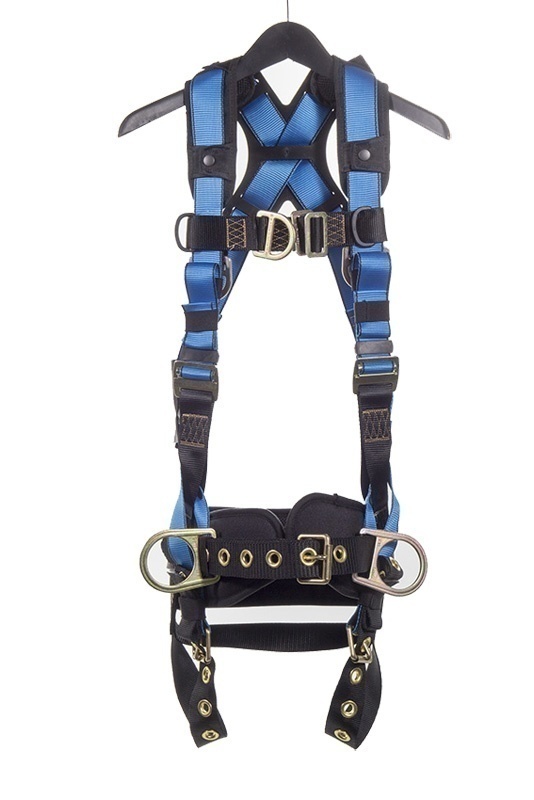YOU HAVE NO ITEMS IN YOUR CART.
Featured Brands

Safety Stand-Down Week 2024: Reach new heights while staying safe
Ladder Safety
Every year, falls from elevation are the leading cause of death for construction and at-height employees. Safety Stand-Down Week - created by OSHA, was established to raise fall hazard awareness across the U.S. in an effort to stop fall fatalities and injuries.
For day four of Safety Stand-Down Week, we're focusing on ladder safety and how to determine if a ladder is the right tool for the job, how to inspect your ladder, and how to properly use a ladder.
This week only, you can get 5 (that's right, FIVE) tool box talks from our friends at Safety LMS for $5. Each of the hand-picked courses cover one of our themes for this week and they are each only $1. Don't miss this opportunity to get five days of training for $5.
Ladders - they help us reach new heights, come in different sizes, shapes, colors, materials, and weights. They are convenient, easy to use, and can help you get the job done quickly. But, when it comes to fall protection safety, ladders are often overlooked. In fact, ladders were OSHAs 3rd most frequently cited standard in 2023.
When shouldn’t I use a ladder?
When you need to reach something higher than you can reach on your own, your first thought is often to go grab a ladder - but, a ladder isn’t always the right tool for the job. To determine if using a ladder is right for you, ask yourself these questions:
- Will I have to hold heavy items while on the ladder?
- Is the elevated area high enough that it would require a long ladder that can be unstable?
- Will I be working from this height for a long time?
- Do I have to stand on the ladder sideways in order to do this work?
If the answer to any of these questions is “yes”, you should consider using something other than a ladder like a scissor lift to handle the job. If a ladder is the only option you should use one that has a working platform with handrails and barricades.
Is the ladder safe to use?
Once you’ve determined that a ladder is the right tool for the job, the next thing you need to do is ensure that the ladder is up to the task. Inspecting your equipment before using it only takes a few minutes and can prevent a job site tragedy. You should not use a ladder if any of the following things are true:
- A leg or rung is bent
- A step or rung is missing
- The spreader bars do not have a locking mechanism or the locking mechanism is no longer functioning
Time to use the ladder!
Now you’ve determined that the ladder is the right tool for the job and you’ve inspected the ladder - the last thing to do now is to ensure that you’re safely using the ladder. To prevent ladder-related falls or injuries always do the following:
- Read and follow all labels/markings on the ladder
- Avoid electrical hazards before handling the ladder. Check for power lines and avoid using metal ladders near electrical equipment or power lines.
- Always maintain a 3-point contact on the ladder when climbing (two hands and a foot or two feet and a hand)
- Keep your body near the middle of the step
- Wear proper footwear (like non-slip footwear)
- Always face the ladder while climbing
- Don’t use a self-supporting ladder in a partially closed position or as a single ladder
- Do not use the top step/rung of the ladder as a step/rung unless it was designed for that purpose
- Only use a ladder on a stable and level surface unless it has been secured (top or bottom) to prevent displacement.
- Do not place a ladder on boxes, barrels, or other unstable bases to obtain additional height.
- Do not move or shift a ladder while a person or equipment is on the ladder.
- An extension or straight ladder used to access an elevated surface must extend at least 3 feet above the point of support.
- The proper angle for setting up a ladder is to place its base a quarter of the working length of the ladder from the wall or other vertical surface.
- A ladder placed in any location where it can be displaced by other work activities must be secured to prevent displacement or a barricade must be erected to keep traffic away from the ladder.
- Do not carry any tools or materials in your hands when climbing the ladder.
- Do not lean away from the ladder to complete your work.
- If you need to use a ladder near a doorway, make sure the door is locked prior to getting on the ladder.
- Be sure that all locks on an extension ladder are properly engaged.
- Be aware of the ladder’s load rating and of the weight it is supporting, including the weight of any tools or equipment.
Safety Spotlight featuring Ontivity
Questions or Need More Info?
If you have any questions regarding the above information or need more insight into safety or fall protection in general, reach out to our Gear Experts®! Click here to contact our team, or use the instant chat feature in the lower right hand corner of your browser screen. Also be sure to connect with us on social media to keep up with all of our latest content.












